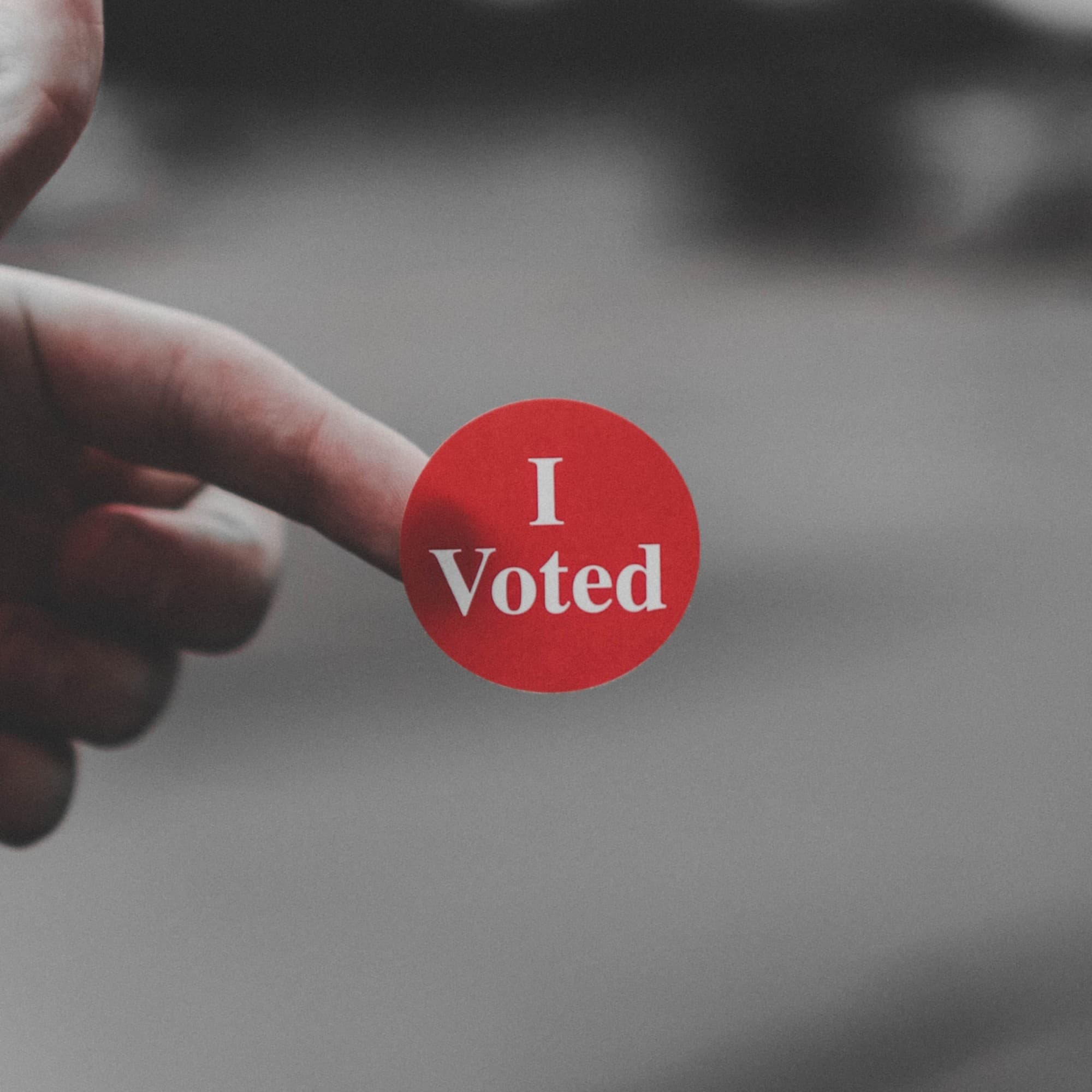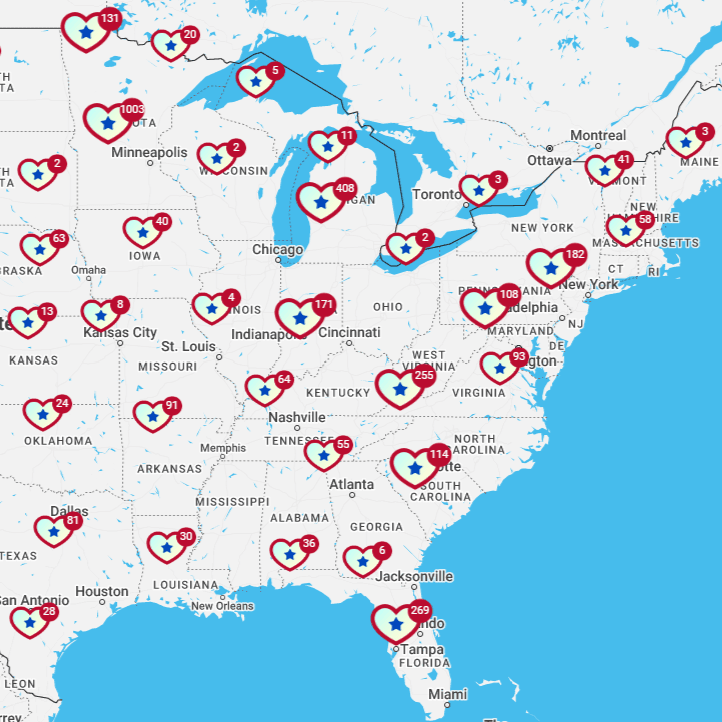
Can Independent Voters Vote in Primaries?
It’s no secret to anyone that the U.S. political system is currently dominated by the two major political parties – the Democrats and the Republicans. Far from an ideal way to organize our democracy, the domination of the two-party system has also greatly complicated what political involvement looks like for citizens and voters who don’t neatly align themselves under party labels. How do independent voters make sure their voices are heard in the political process?
Perhaps more critically – how can independents have their voices heard during the primary process? Unfortunately, for too many offices on a nationwide, statewide, and local level, the options will almost always boil down to a Republican and Democrat, with institutional barriers often proving too rigid for independents to break through and find electoral success. (Obviously, this does happen, it’s just far rarer than it ought to be). So the issue for independent-minded voters becomes, well, how do they affect the primary races that determine which candidates are on the ballot for the general election?
This is where things get messy. Different state parties have different rules for how they operate primary elections – and naturally, they vary by office as well. This article will break down exactly where registered independent voters can participate in partisan primary elections, and where they can’t. Like too many facets of the American political system, it’s a bit more complicated than it needs to be. So let’s get into it.
The Different Types Of Primary Election
To cohesively answer how independent voters who aren’t registered as Democrats or Republicans can participate in local and/or national primary elections, we first have to break down the different types of primary election – because, yes, there are a wide variety of primaries that have different requirements and accessibility.
The Closed Primary
The first time of primary election employed by the major parties is the closed primary, and it’s probably the easiest to understand: simply put, these primary elections are closed to anyone who isn’t a registered party member. And that goes both ways. If you’re a registered Democrat in Florida, for example, you can only vote in the Democratic primaries, and not the Republican primaries. If you’re not registered as either, however, you might just be flat out of luck. In recent years, however, the Democratic Party in a few closed-primary states have amended their system to allow registered Democrats and unaffiliated independents to vote in their primaries, excluding only registered members of other political parties.
Here’s the full list of states that employ a closed or semi-closed primary system:
Alaska*
Arizona
California*
Connecticut
Delaware
Florida
Hawaii
Idaho*
Kentucky
Maine
Maryland
Nebraska*
Nevada
New Jersey
New Mexico
New York
North Dakota*
Oklahoma*
Oregon
Pennsylvania
South Dakota*
Utah*
Washington*
So, right off the bat, we can see a lot of state parties employ closed primaries, which doesn’t bode well for independent voters in those areas. However, the states with an asterisk * next to them are marked as such because the Democratic Party of those states have opened their closed primaries to allow non-affiliated independents to cast primary ballots. The states marked by an asterisk only close their Democratic primaries to voters who are registered to any party other than the Democratic Party – meaning a registered Libertarian or Republican can’t vote in their primaries, but independent voters who belong to no other party can cast their vote alongside registered Democrats. This is definitely a step in the right direction to allow greater participation from a broader swath of the voting populace – but clearly, as you can see, it’s nowhere near enough.
Open Primary – With Partisan Registration
The next type of primary election is the open partisan primary with partisan registration. Kind of a mouthful, we know. Basically, what this means is that registered party members – Democrats or Republicans – can only vote in their party’s primaries. Unaffiliated and independent voters, however, can participate in the primary elections for either of the two parties – not both – if they register with that party for the sake of the primary.
Essentially, as an independent voter, you can decide whether you’d like to vote in the Democratic or Republican primaries, and then you’ll be capped to only participating in the primaries of your chosen party. Note: what this doesn’t mean is that independent voters need to register as a party member to vote in the primaries. With open partisan primaries with registration, all that is happening is that you, as the independent voter, must simply decide between which of the parties’ primaries you’ll be voting in. It doesn’t mean you’re an official registered party member or anything like that.
These are the states that employ the open partisan primary with partisan registration system:
Colorado
Iowa
Kansas
Massachusetts
New Hampshire
Rhode Island
West Virginia
Wyoming
Open Primary – With Nonpartisan Registration
The third type of primary is the open primary with nonpartisan registration – and what this means is that any voter, irrespective of their partisan registration, can vote in whichever primary they feel like. Independent voters can participate in the Democratic and Republican primaries, and even registered Democrats can vote in the Republican primary, and vice-versa: registered Republicans can vote in the Democratic primary. Because voters aren’t required to formally affiliate with either major party, any registered voter can vote in whichever primary they please.
Because open primaries with nonpartisan registration don't require any sort of partisan affiliation, these are generally considered the easiest for independents to participate in. As long as you’re registered to vote, period, you can vote in the primaries of the following states:
Alabama
Arkansas
Georgia
Illinois
Indiana
Michigan
Minnesota
Mississippi
Missouri
Montana
North Carolina
Ohio
South Carolina
Tennessee
Texas
Vermont
Virginia
Wisconsin
There has been a fair amount of controversy with open primaries such as these, with opponents saying that letting anyone participate in a primary opens the door for bad-faith actors to purposely vote for who they perceive as the weaker candidate, hoping that this weaker candidate wins the nomination, but ultimately loses to the voter’s preferred candidate in the general election. In essence, opponents may argue, open primaries are themselves open to corruption by people who want to see either party nominate a “bad” candidate who would lose to their preferred candidate running on the opposing party.
However, proponents say that open primaries without partisan registration are the most democratic possible primaries, as there’s no partisan exclusivity for who gets to cast primary ballots – it’s just the voters. Because open primaries without partisan registration by definition don’t require partisan identification, there’s also fewer bureaucratic barriers that the average voter will have to contend with in order to cast their ballot. Partisan registration can often be an opaque process, and like many things in general, simplifying access improves turnout.
Changing Partisan Registration
If you’re an independent voter looking to register for a specific party for the purposes of voting in an open primary with partisan registration – or simply a voter of any stripe looking to change your official party affiliation for any reason, you’ll need to contact your state election office. Each state has a slightly different process, and following the aforementioned link will help you get in contact with the election office of your specific state.
Conclusion
The partisan primary process is often confusing, obtuse, and difficult for the average voter to navigate – often an intentional decision by the major parties. It’s nowhere close to an ideal system. But it’s what we must contend with for the time being, especially in races without a strong, viable independent challenger to either of the major party’s nominees.
GoodParty.org is building tools and programs to help make things easier for both independent candidates running for office and independent voters looking for ways to get involved in what is all too often a corrupt political system. Sign up for our newsletter and get involved here.
Photo Credit: Parker Johnson on Unsplash
Learn how GoodParty.org is empowering Independent voices across the country.
